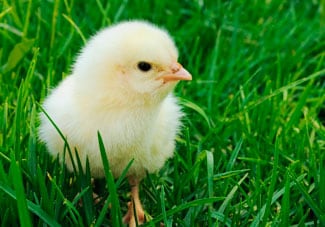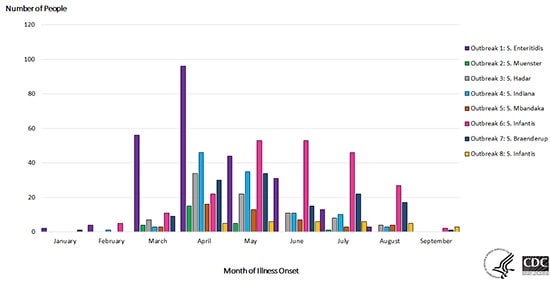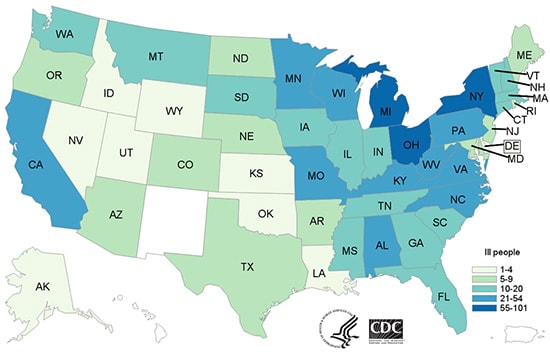Eight Multistate Outbreaks of Human Salmonella Infections Linked to Live Poultry in Backyard Flocks (Final Update)
Posted October 6, 2016 2:45PM ET
Highlights
- Read the Advice to Backyard Flock Owners »
- Although these outbreak investigations are over, people can still get a Salmonella infection from live poultry, including those kept in backyard flocks. Read more information about Salmonella from live poultry and how people can reduce their risk of infection. Regardless of where they were purchased, all live poultry can carry Salmonella bacteria, even if they look healthy and clean.
- This year saw the largest number of illnesses linked to contact with backyard poultry ever recorded. These outbreaks are a reminder to follow steps to keep your family healthy while enjoying your backyard flock.
- Always wash hands thoroughly with soap and water right after touching live poultry or anything in the area where the birds live and roam.
- Do not let live poultry inside the house.
- Do not let children younger than 5 years handle or touch chicks, ducklings, or other live poultry without adult supervision.
- CDC, multiple states, and the U.S. Department of Agriculture’s Animal and Plant Health Inspection Service (USDA-APHIS) investigated eight separate multistate outbreaks of human Salmonella infections linked to contact with live poultry in backyard flocks.
- In the eight outbreaks, 895 people infected with the outbreak strains of Salmonella were reported from 48 states.
- Illnesses started on dates ranging from January 4, 2016 to September 10, 2016.
- 209 ill people were hospitalized, and three deaths were reported. Salmonella infection was considered to be a cause of death for one person in Mississippi. Although the two people who died in Kentucky and New Jersey had a Salmonella infection, the infection was not considered to be a cause of death.
- 254 (28%) ill people were children 5 years or younger.
- Epidemiologic, traceback, and laboratory findings linked the eight outbreaks to contact with live poultry, such as chicks and ducklings, sourced from multiple hatcheries.

























.png)











No hay comentarios:
Publicar un comentario